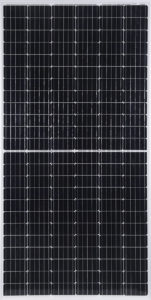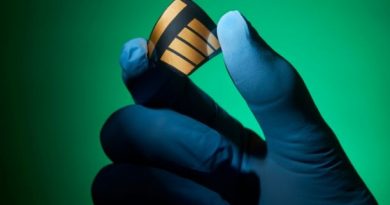Vikram Solar promises better output with new Half-Cut-Cell Modules
 No half Measure, this
No half Measure, this
Leading solar energy solutions provider, Vikram Solar today announced the launch of its new line of solar modules using the latest Half-Cut-Cell technology.These will be launched formally at the 2018 Renewable Energy India Expo being held in Greater Noida from 18th-20th September.
According to the company, the new high-density module technology is engineered to generate more power from advanced mono-PERC (Passivated Emitter and Rear Cells) half-cells, thus achieving better Levelized Cost of Energy (LCOE). LCOE is a measure of a power source which allows to compare different methods of electricity generation on a consistent basis. It is an economic assessment of the average total cost to build and operate a power-generating asset over its lifetime divided by the total energy output of the asset over that lifetime. The LCOE can also be regarded as the average minimum price at which electricity must be sold in order to break-even over the lifetime of the project.
“The innovative design principle minimizes shadow-loss through a series-parallel cell connection, when one-half of the modules are affected by shading. The high efficiency half-cell modules are the perfect fit for all utility and rooftop projects,” the company released in a statement.
Performance of a series connected string of solar cells is adversely affected if all its cells are not equally illuminated (partially shaded), because in a series connected string of cells, all the cells carry the same current. Even though a few cells under shade produce less photon current but these cells are also forced to carry the same current as the other fully illuminated cells. This might cause the shaded cells to get reverse biased, acting as loads, draining power from fully illuminated cells. If the system is not appropriately protected, hot-spot problem can arise and in several cases, the system can be irreversibly damaged. The series-parallel cell connection in the module addresses this concern while increasing the efficiency.
Mr. Ivan Saha, BU Head- Solar Manufacturing and CTO, Vikram Solar said, “We are taking a big step by introducing advanced new High-Density Monocrystalline Modules using innovative Cell-Cleaving Technology. The design, superior price performance, increased shade tolerance and reduced power loss is expected to make a big splash in the market.” The move assume significance at a time when domestic sourcing is becoming a priority, especially in smaller projects as well as rooftop installations, and Vikram Solar will hope that the quality improvement will help move some more doubters to them.

Key highlights of the new Solar Module:
- The module consists of 144 and 120 half-cells instead of 72 and 60 full cells yet keeps nearly the same dimension as standard 72 and 60 cell modules.
- Higher energy yield through lower cell resistance. Half-cell modules have a higher fill factor and higher efficiency, the new technology increases the module output by ~15 Wp per module compared to standard PV modules. The technology also boasts efficiency up of 19.56%, according to Vikram Solar.
- The cells are cut with low temperature and lower kerf depth maximizing cell yield with no junction damage.
- No hotspot degradation on the modules, using the series-parallel connection.
- The split junction box provides better heat dissipation improving the life of the module.
Half-Cut-Cell technology has been an area of keen interest for most Chinese developers and big players like Jinko, who’ve created modules that have recorded 22.2% efficiency. With this move Vikram Solar will look to bring a new change in the Indian solar market with a technology that offers a greater efficiency at a lower price.
Recently, Vikram Solar announced the commissioning of its 10 Megawatt (MW) solar power project for ONGC in Gujarat.




